Doctors in Performance: Abstracts 3 September 2025
Get to know the presenters and their subjects in the Doctors in Performance 2025
Inja Stanović
Grasping the Style: Artistic research and historically informed performance
Historically informed performance practice is inherently complex, not only are instruments and playing styles relative to specific cultural, social and historical contexts, literary sources are often highly subjective and, as with the performances that they describe, a product of their own time. Fortunately, practice may be informed by the existence of early recordings, which serve to illuminate stylistic conventions of past eras; such conventions are rarely mentioned in written documents and, using recordings as a guide, the principles of previous performances and interpretations can be systematically studied and understood. Crucially, recordings do not merely offer a window into the sound-world of past performances, they also offer a wealth of information about the physical and tactile nature of performance, which may ultimately serve as a model, or exemplar, for contemporary performances of the same works.
This lecture-recital discusses the role of early recordings in artistic research, starting with a discussion of the project (Re)constructing Early Recordings: a guide for historically-informed performance, established to provide the first ever systematic study into mechanical recording processes. Throughout, (Re)constructing Early Recordings focussed on 1) practical experiments using early recording technologies to capture a series of musical performances; 2) analytical studies, including analysis of mechanical recordings, and a comparison between mechanical and digital recordings; 3) investigation of methods for the capturing, analysis and understanding of mechanical recording technologies that may substantially inform future research and scholarly enquiries. The usage of Edison phonographs and other various mechanical recording machines to produce wax cylinders and 10-inch discs highlighted a huge gap in contemporary understanding of the mechanical recording process, and early recordings. Since then, these experiments with mechanical recording techniques have included various settings: from research-oriented workshops with students and professionals, to historically informed (re)constructions of analogue sound carriers.
Live performances will be used to explain how mechanical recording technologies informed performance-practice research, demonstrating certain key findings, shedding light on early recording practices, along with insights into romantic playing practices, styles and recording techniques of the early twentieth century. More broadly, this lecture-recital points out a long-standing gap in our contemporary understanding of mechanical recording sessions, the extent to which performing musicians adapted their practice when recording with mechanical technologies, and explores plethora of possibilities in early recording usage in artistic research.
Keywords: artistic research, historically informed performance practices, early recordings, mechanical recording technologies
Biography
Dr. Inja Stanović is a pianist and musicologist, whose areas of research include early recordings, historically-informed performance practices, and historical recording technologies. Through her previous research, she developed new research methods – historically informed recordings and mechanical recording workshops. As a pianist, Inja has performed throughout the world, and she is also a published author. Most recent publications include the co-edited (with Dr. Eva Moreda Rodríguez) volume Early Sound Recordings: Academic Research and Practice (Routledge, 2023), research album Austro-German revivals: (Re)constructing Acoustic Recordings (co-authored with Dr. David Milsom; University of Huddersfield Press, 2023) and the article for Music & Practice, ‘(Re)constructing Early Recordings: Reviving the Brave Belgians’ (co-authored with dr. Jeroen Billiet, 2023). A recent review from Music & Letters (June 2024), describes Inja’s writing as “a testament to the power of practice-based research [that] should be read by every scholar or student who seeks to draw upon early recordings in their work.”
Inja currently works as Surrey Future Senior Fellow, at the University of Surrey, where she is the Head of Performance, and directs the digital platform for historical recording research and practice – Early Recordings Association. ERA embodies forward-thinking research and serves to educate and inform researchers and students, generating innovative paths in the field of early recording research.
Liliana Parisi
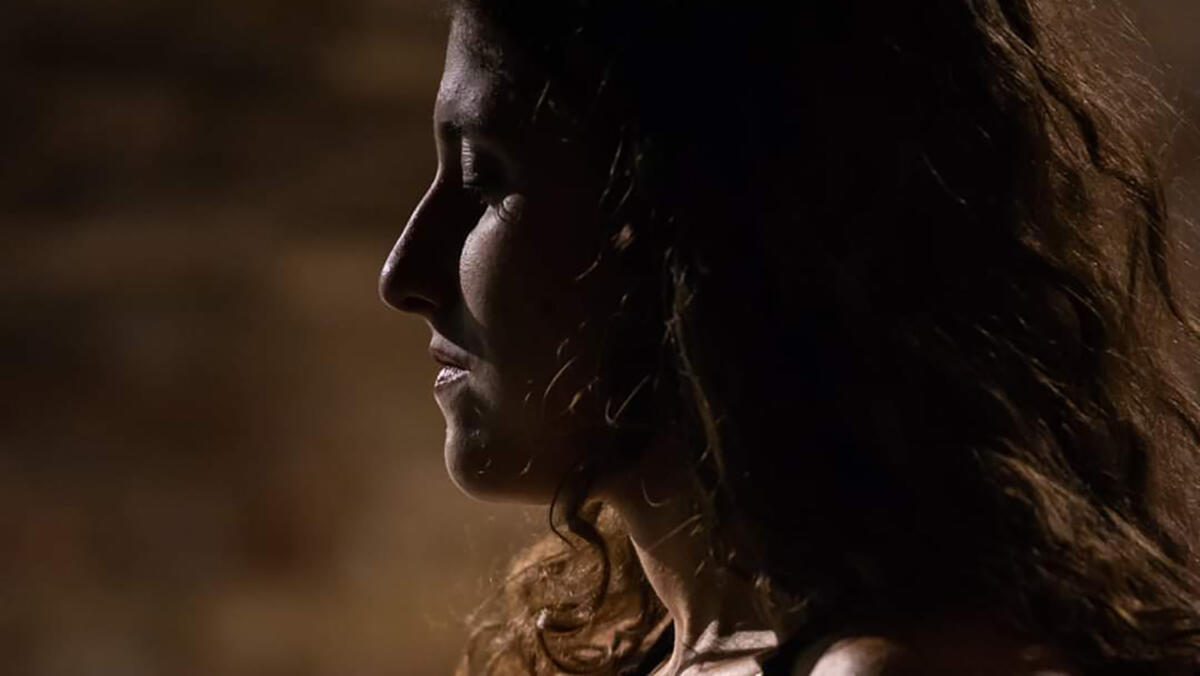
Gesture and the Pianist in Contemporary Music: An Artistic Investigation
The pianist, through her body, engages in a creative act that starts from the score and culminates in a deeply personal interpretation of the composition. Beyond the muscular and tendon-based aspects of gesture or the traditional definitions found in pianistic technique manuals, my artistic research seeks to explore the intersection of physical and metaphorical gesture, aiming to rethink my own pianistic approach to contemporary music. My research opens with personal questions on my own practice seeking to clarify what gesture is not, establishing the boundaries between gesture and gestural perception.
In my presentation, I will address these questions by playing two pieces, i.e. Le rossignol en amour (2019) by Tristan Murail and Voicelessness. The Snow Has No Voice (1986) by Beat Furrer. Murail’s piece is particularly relevant because the performer not only “plays” but also responds to environmental and audience feedback, often in real time. Working closely with Murail allowed me to integrate my gestural approach with his compositional intent. The latter is likewise significant: the piece is composed in a peculiar way in which the systems intersect themselves so that the musical staff is played beforehand by the right hand and immediately after by the left one, generating an idea of continuity. Furthermore, my research has also involved a collaboration with other artistic disciplines, e.g., dance, thus I will conclude my presentation by showing a video of an experimental piano-dance performance I had played with a contemporary dancer.
My performance will be strictly tied to the goals of my research, especially looking for a radical re-thinking and a de-construction of my musical gesture, obtained by an ‘un-learning’ of my practice: this is aimed to create a personal approach to the score through an ‘awaken’ corporal and gestural consciousness that will afford new – or rather renovated – experiences to the audience.
Biography
Born in 1998, She graduated in Piano with the highest grade at the Conservatory of Vibo Valentia. While there she also attended the Percussions course in parallel. She earned the first level Masters degree in Piano at the Conservatory of Milan with honors and honorable mention. In 2023 she also earned a degree in Biomedical Engineering. She has collaborated with the Composition and Electroacoustic Composition courses of the Conservatory of Milan. Among her last undertakings, the full performance of the opera “Vanitas” by Salvatore Sciarrino around Italy. She is actually a PhD candidate at the Conservatory of Milan.
Diana Zandberga
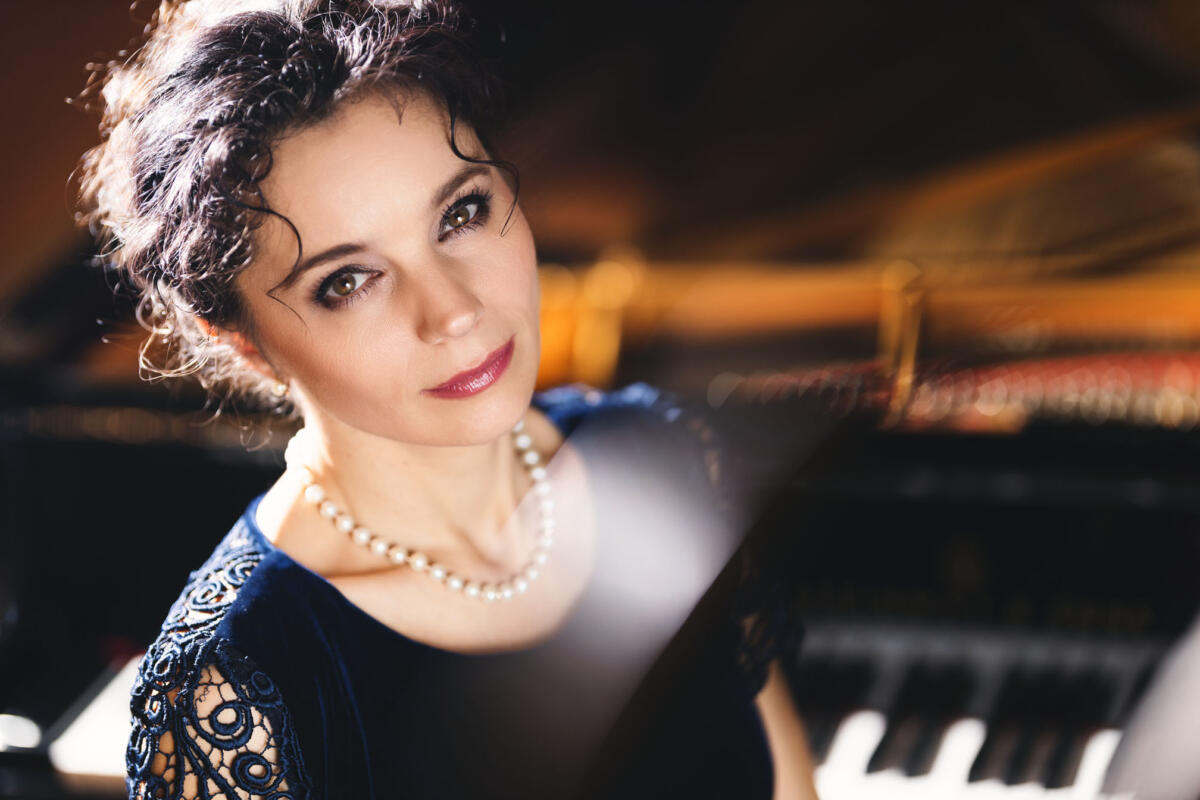
Challenges of the Choreomusical Performance
This research is dedicated to multisensory integration of body movements and sound in contemporary music specially written for the musician (pianist) who can dance and therefore express music in various ways. American choreographer Juliet McMains and composer Ben Thomas emphasize two types of choreomusical relationships – amplification and emergence (McMains, Thomas 2013). It can result in the performances of one multidisciplinary artist.
The piano work “Lure of Light” (2025) by Latvian composer Indra Riše (1961) includes the choreographic cadenza of pianist, where the rhythmic patterns are performed with point shoes. Immersion into music is like finding a natural hideaway that protects from the struggles of the real world. Thus, the dance amplifies or illustrates the idea presented in the music – one artform complements the other, but none is dominant.
Two choreomusical miniatures “Crystals” (2024) by Latvian composer Anitra Tumševica (1971) and choreographer Milana Komarova (1989) are inspired by except from the Bible – having the glory of God, its radiance like a most rare jewel, clear as crystal (Revelation 21:11).
- At the “Mountain Crystal”, the recording of electronics is mixed with live piano and dance performance. The idea is based on an interaction and canon between the spiritual and physical world: ideal and imperfection.
- “The Viking Stone Crystal” depicts a sun compass artifact with crystals, which allowed Vikings to guide their boats at night. Two media – dance and music simultaneously create imagery, which is not possible in one artform. Thus, the choreomusical relationships in “Crystals” by Anitra Tumševica emerge a new, qualitatively different meaning that does not exist in either medium alone.
The research method includes the collaboration of performer with like-minded composers, visual artists and choreographers to create multimedia works as well as autoethnographic reflection afterwards and display the results of artistic research and collective creative work.
Biography
PhD Diāna Zandberga is a pianist specialising in Artistic Research, Vice-Rector for Research and Creative Work of the Jāzeps Vītols Latvian Academy of Music and the Director of the Joint Professional Doctoral Study Programme in Arts.
Since 1996 Diāna Zandberga has won acclaim for a succession of recitals in European countries and the USA. She has premiered piano works by dozens of different composers. Her discography includes eight solo albums and recent research interests are concentrated to aspects of artistic research such as interdisciplinarity and choreomusical performances. https://dianazandberga.com
Sebastian Dumitrescu
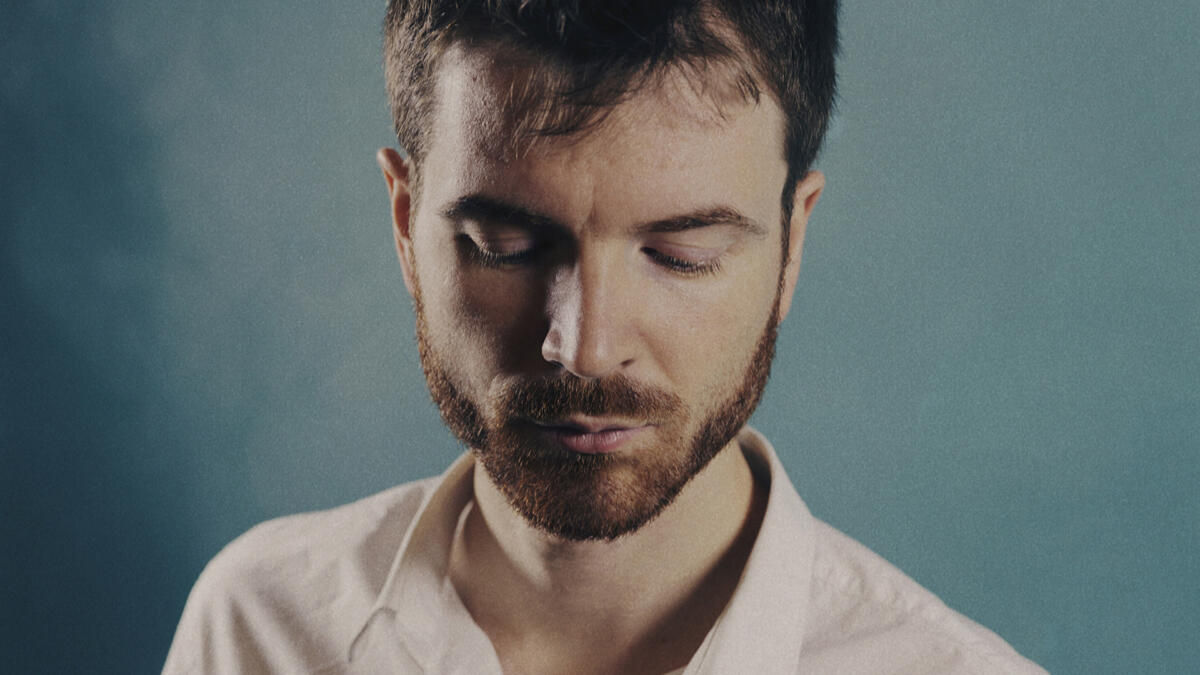
Using consonance and dissonance as compositional devices in microtonal music
In my artistic reasearch I aim to find possible uses of consonance and dissonance as devices for creating harmonic coherence in the microtonal tuning system of 31 equal divisions of the octave. Using one or several mathematical models, I evaluate spectral chords that use natural harmonics up to the 11th partial, and then base my compositional decisions, at least in part, on the results given by these models.
In this lecture-recital I will present Arrhythmia, a 31-tone piece for the microtonal Lumatone keyboard and interactive live electronics. In Arrhythmia I am attempting to move to the next level of understanding of the harmonic syntax that I am researching: the computer, knowing in real time which notes the live performer is playing, follows a dictionary of rules in order to generate notes that follow various models of the aforementioned harmonic syntax. The piece is interactive, meaning that, since the performer cannot predict (at least not in real time) what the computer will play next, the decisions made by the computer that impact the form of the piece will come as more or less of a surprise to the performer.
Biography
Sebastian Dumitrescu (born 1989, Bucharest) has been living in Finland since 2003. He studied composition with Juhani Nuorvala at the Sibelius Academy in Helsinki. Since 2023 he is a doctoral student at the DocMus school of the University of the Arts Helsinki.
Sebastian is specialized in microtonal music. One recent work is Songs from Wilderness, which he performed together with mezzo Isabella Shaw.
Sebastian plays the Lumatone microtonal keyboard, as well as the electric bass. In 2019 he was the soloist in the premiere of electric bass concerto Vaali-ilta, composed by Niilo Tarnanen.
Marco Ramelli and Enrica Savigni
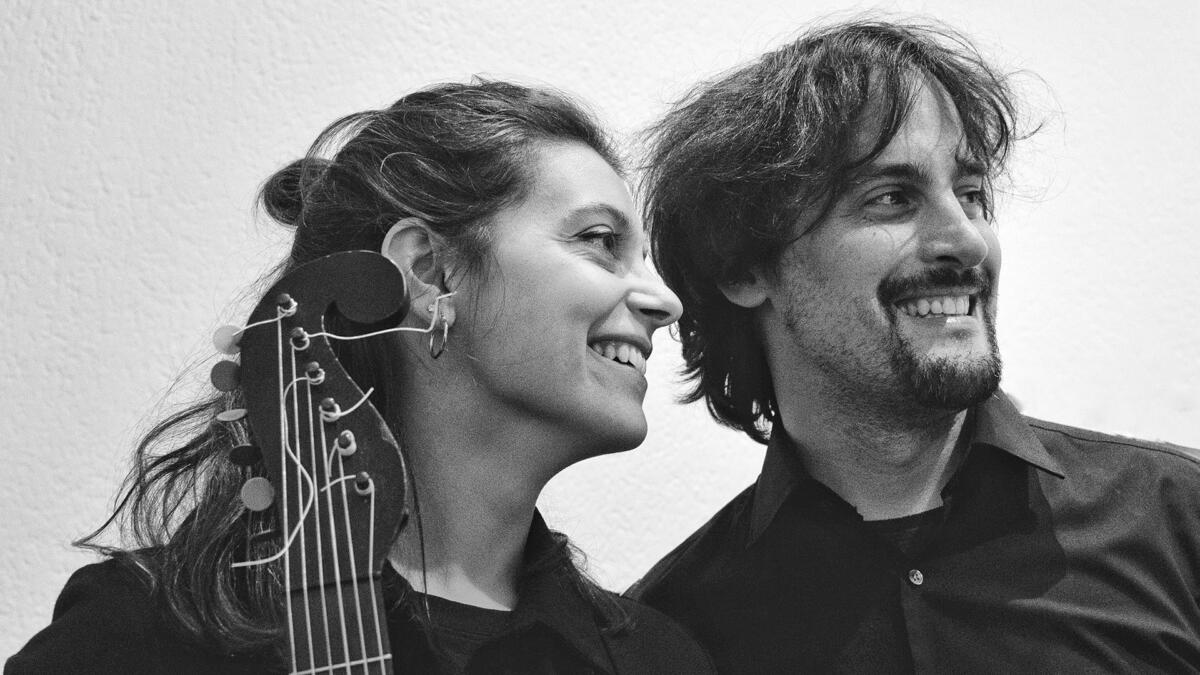
Time, Touch, and Creativity: Exploring Tactile Perception in Romantic Performance Practice
In recent years, studies on Romantic performance practice and analyses of early recordings—such as the work of Clive Brown, Neal Peres da Costa, and Inja Stanovic—have shed light on how time, rhythm, and asynchrony were integral aspects of historical musical approaches. These practices created a fluidity and variability of time that is often challenging for modern musicians and listeners to fully grasp. Techniques such as rhythmic displacement, asynchrony between the hands on the piano, and nuanced tempo variations were central to a radically different conception of time and sound.
However, observing these temporal effects through recordings alone does not fully capture the essence of tempo rubato. This practice is not merely an aesthetic choice but reflects a different way of perceiving and listening during performance, likely influenced by neurological processes. We propose that tactile perception—haptic feedback—played a crucial role in shaping these practices.
As part of the TouchTheSound project, we investigate how historical instruments, pedagogical methods, and the makeup of past musical communities may have stimulated brain plasticity. This, in turn, likely fostered a deeply integrated tactile approach to playing and listening, profoundly influencing perceptions of time and fostering creativity.
In this lecture-recital, we demonstrate our strategies for developing tactile sensitivity in our guitar duo performance to create meaningful rhythmic nuances. Our approach addresses the concept of time indirectly by using historical instruments with their inherent limitations and by fostering a community where these nuances carry expressive meaning. This process develops subliminal perception and subconscious responses.
This methodology not only informs our creative approach to interpretation but also provides deeper insights into how tactile perception may have shaped Romantic performance practices.
Biographies
Dr Marco Ramelli is an artist of diverse interests, encompassing roles as a researcher, guitarist, composer, lecturer, and artistic director. He is currently a lecturer at TU Dublin Conservatoire. Together with Enrica Savigni and Gabriele Lodi created the TouchTheSound project. In 2019, Marco earned a Doctorate in performing arts from the University of St Andrews. As researcher his most recent publication is a chapter in the book “Roberto Gerhard: Re-appraising a Musical Visionary” published by Oxford University Press. He is an advocate for music education and an Artistic Director of music festivals in Italy, the Czech Republic, and Ireland.
Enrica Savigni is a classical guitarist who has been deeply interested in historical instruments since 2012. She graduated in 19th century-guitar at Civica Scuola di Musica (Milan) in 2013. In 2021 she obtained her Master of Arts in music performance in the Early Music department of the Koninklijk Conservatorium of Brussels. She plays in duo with her sister, fortepianist Laura Savigni, performing the nineteenth-century repertoire for piano and guitar and exploring the duo formation through transcription and contemporary compositions. She is a DMus research student at the TU Dublin Conservatoire, a freelance performer and a guitar tutor at Maynooth University.
Connor Wilcox
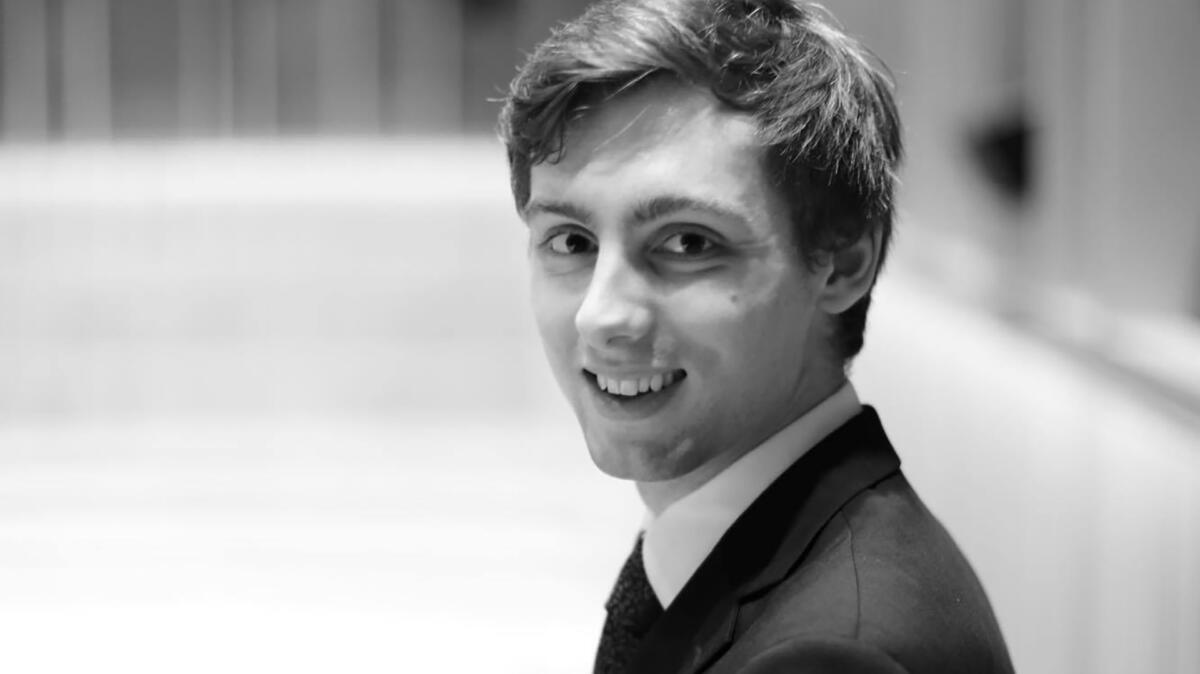
Reviving Roseingrave: harmony and interpretative opportunities in Thomas Roseingrave’s Harpsichord Suite No. 2 in C minor
In the context of eighteenth-century musical life, Thomas Roseingrave is seen as a minor composer and performer, overshadowed by his now more famous contemporaries Johann Sebastian Bach, George Frederick Handel and Domenico Scarlatti. There is a comparatively small body of existing research on Roseingrave, with a similarly small body of commercial recordings currently in existence. Roseingrave’s keyboard music has at times been dismissively viewed as eccentric owing to his mental instability particularly with regard to his use of harmony. This lecture recital redresses this evaluation, drawing parallels in Roseingrave’s compositional practice to his better-known contemporaries, and explores Roseingrave’s unique sense of modulation in his Harpsichord Suites of 1728, with particular focus on the Second Suite in C minor. Roseingrave’s highly creative and expressive use of harmony, displayed most clearly in his Harpsichord Suites, warrants a revival of the composer’s works from their current level of obscurity and, given that his suites are not yet widely performed on modern pianos in the way that those of Roseingrave’s contemporaries are, they have much to offer in the realms of dynamic shaping, voicing and ornamentation, with many possibilities remaining as yet unexplored. This lecture recital outlines potential approaches in these areas when performing the Second Suite on modern pianos, leading on from existing practice in recordings of the keyboard suites of Bach and Handel.
Work to be performed: Thomas Roseingrave’s Harpsichord Suite No. 2 in C minor
Biography
Connor Wilcox is a Scottish pianist based in Dublin. He is currently following a programme of doctoral study at the Royal Irish Academy of Music, under the tutelage of Anthony Byrne and Denise Neary. He has given solo and collaborative recitals throughout Ireland and the UK, including the Boyle Arts Festival (2024), National Concert Hall John Field Room (2024), Ulverston International Music Festival (2019) and the Birmingham International Chamber Music Festival (2018). He has also lectured in music theory in the Royal Irish Academy of Music and University College Dublin.
Agata Meissner
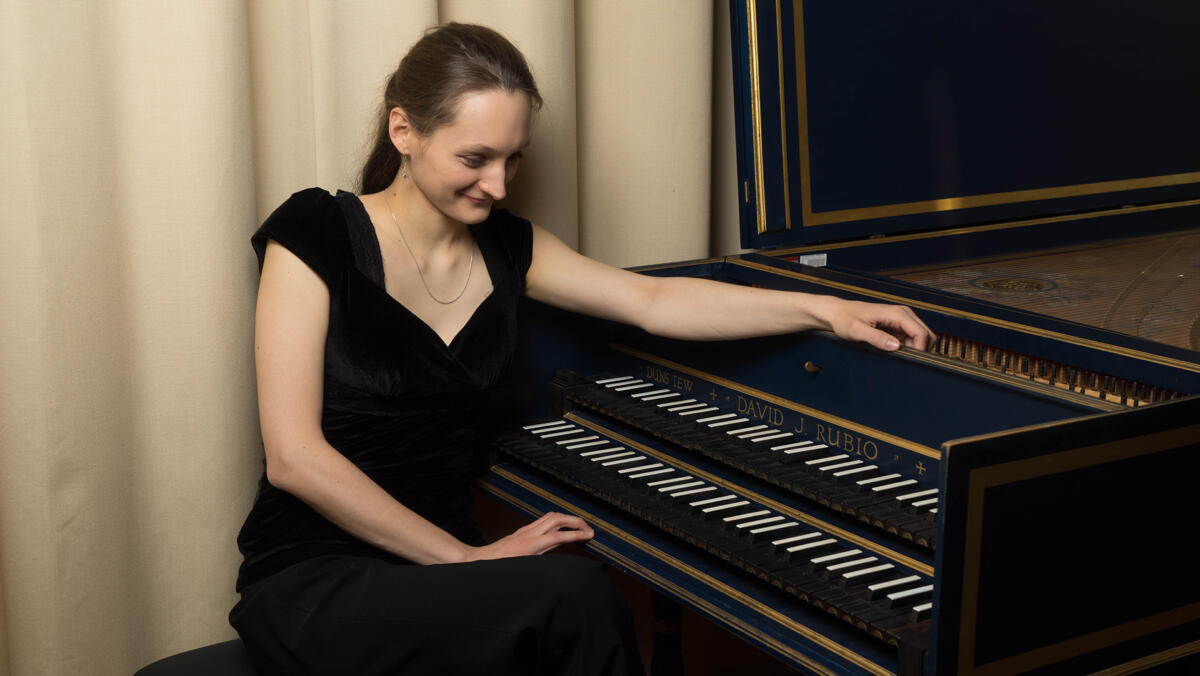
Alter Weiber Krieg am Wiener Graben by Alessandro Poglietti (early 17th c. – 1683) – structural and practical questions answered in perform
In the edition of all works of Alessandro Poglietti that was issued by Jörg Jacobi in 2020 Alter Weiber Krieg am Wiener Graben was called “probably one of the most complex keyboard cycles of the 17th century”. Due to its unusual structure and fragmentary preservation in source material, the piece remains a particular challenge both in the musicological description and a performance – problems that can be addressed through a practical approach.
Alter Weiber Krieg can be described as a very complex suite, that draws both from the tradition of the 17th c. harpsichord music of Viennese Courte and popular in this time musical imitation of non-musical phenomena. The suite consists of four dances (allemande, courante, sarabande, gigue), the halves of which are split by figurative passages – partes. They base on quasi-improvisatory passages, that often use the same harmonic structure (but not always) and refer in their name to the variation technic. The last movement is a programmatic miniature from which the whole cycle takes its name. The source material (CZ-KRa A-4805) is an autograph of the composer and a unique copy, which lacks the beginning folio and the opening compositions – probably a toccata and canzona as in other suites by Poglietti.
In my presentation I will work on a number of practical problems of this suite – the ornamentation, choice of tempi, historic fingerings, choice of movements and further topics concerning the history of the keyboard instruments – use of short octave, tuning problems and an unusually wide keyboard range required by the composition. Finally and most importantly, working on this piece in performance will allow a deeper understanding of the particular structure of the composition, which can be described as a fusion of suite and variation or improvisation, whose inner logic and narrative quality becomes clear only through a performance.
Performed piece: Alessandro Poglietti: Alter Weiber Krieg am Wiener Graben
Biography
Agata Meissner works as a harpsichordist at University Mozarteum, Salzburg since 2020, where she graduated in harpsichord (Florian Birsak, 2016) and Historic Performance Practice (Reinhard Goebel, 2020). She also studied Musicology at Warsaw University (graduated 2013). In 2020 she started her PhD project on the keyboard music in Austria in 17th and 18th century. In 2019 she was awarded by Mozarteum Research Competition for a project connecting practical, pedagogical and theoretical aspects of performance with split-key harpsichords. She performs as a soloist and in chamber music settings and orchestras. She also takes part in conferences both in Austria and abroad (Germany, Poland, Italy).
Erno Aalto-Urantowka
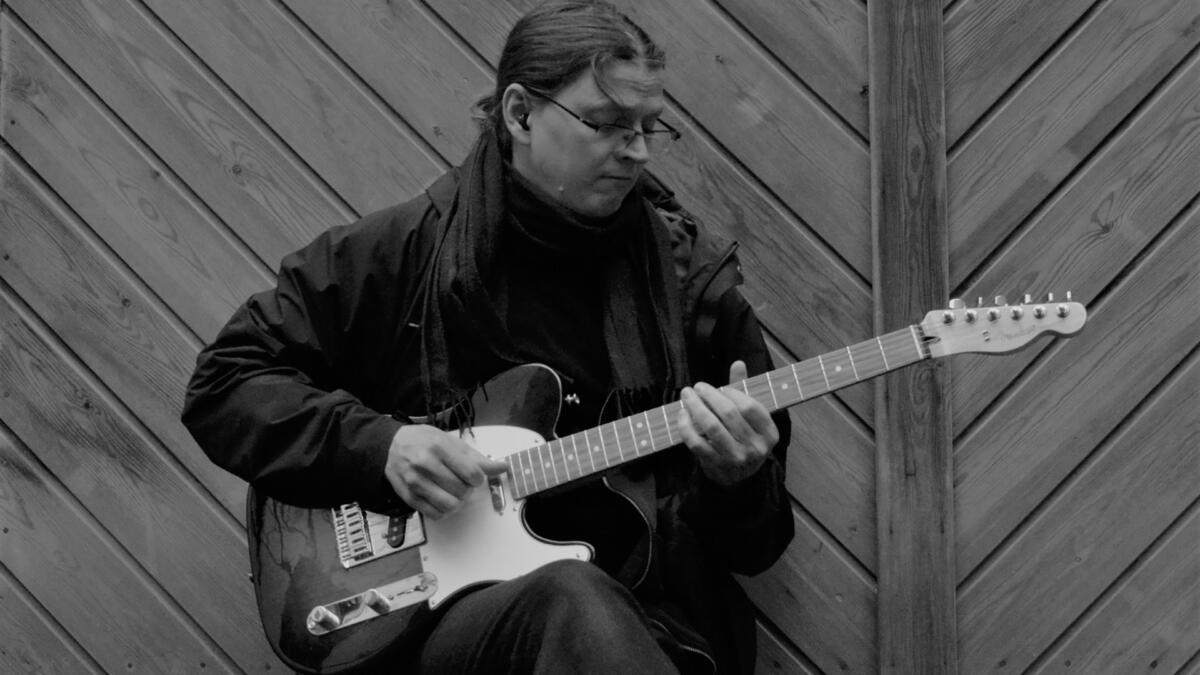
Socially constructed musical gesture at the core of free improvisation pedagogy
Improvisation pedagogy in Finland has seen significant development over the last few years. A new national curriculum in 2017 outlined musical improvisation as one of the key learning objectives as part of music school studies. This major shift in the emphasis on improvisation raised concerns about improvisation pedagogy, materials, and teaching competency among music school teachers. Many courses and websites were developed for the teachers, who felt the need for guidance in using improvisation as a part of their teaching practices.
According to recent improvisation studies, however, the scope of improvisation pedagogy seems to be quite limited. Improvisation is usually utilized to teach either genre-specific musical style or musical structures and skills. Social or open form approaches to improvisation pedagogy are utilized more rarely. Furthermore, it seems that improvisation is more readily taught in the music schools in individual classes rather than in groups, orchestras, choirs, or musicianship classes.
In this paper I discuss a way to inform improvisation pedagogy that considers the aspects of social learning and open form in musical improvisation. The notions of ‘Community of musical practice’ and ‘Musical gesture’ are presented as a framework for teaching free improvisation in Finnish music school system. Musical gestures are seen as a way to shift the focus from learning pre-conceived structures and materials to develop one’s own improvisational vocabulary and aesthetical approaches. The improvisation practices in group settings are seen as active participation to a group effort where meanings, knowledge, and identities are constructed and shared by the group members.
This paper also introduces an example how the notions of group practices and musical gestures could be considered in improvisation pedagogy. Improvisation course “Improryhmä”, developed by the author, showcases how the student group can be engaged in the processes of meaning-making and ownership of the improvisational materials
Biography
Erno Aalto-Urantowka is a performing musician, educator, band leader and a doctoral researcher. Electric guitar being his main instrument, one of his life-long passions is musical improvisation, aiming for stylistically diverse and exploratory attitude towards any music be it an Indian raga, a violin piece by J.S. Bach or free improvisation.
As a music educator, Aalto-Urantowka teaches musicianship skills in Central Helsinki Music School. There he developed an improvisation course “Improrymä”, where music students study various ways to approach musical improvisation. Currently Aalto-Urantowka is conducting research on improvisation pedagogy as a part of his doctoral studies in University of the Arts Helsinki.
Anastasios Zafeiropoulos
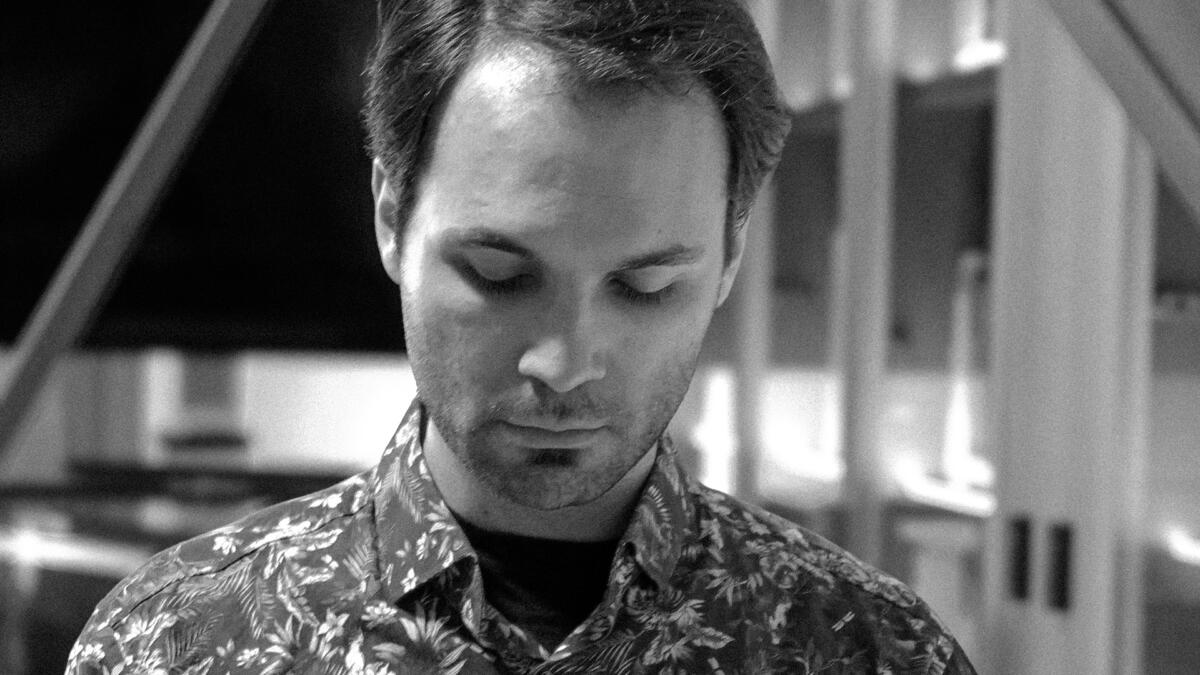
A hint of keyboard magic”: Clementi’s Sensational Fingerings in the Revisions of his Toccata and Sonatinas
Similarly to his celebrated op. 2, Clementi revised his Progressive Sonatinas multiple times over a span of more than twenty years from 1797 to c. 1820. Both revision processes seem to reflect evolving ideas about performance styles and notation, as well as a strong affinity to the developing English piano manufacture during the composer’s lifetime. Rather than marketing strategies that facilitate the pursuit of financial gain (Platinga 1977) or “disturb […] the original effect of the music” (Wollenberg 2018), I see revisions as opportunities for updating musical notation for the most recent available pianos, “born from a unique negotiation between original and ‘new and improved’” (Helyard 2022).
If the publication of op. 2 in 1779 “launched Clementi’s career as an innovator in pianistic virtuosity” (Harrison/Drabkin 2004), op. 36 has become the epitome of Clementi’s legacy as a pedagogue. The revised edition of his Toccata op. 11 (1792) kickstarted a series of meticulously fingered publications of remarkable didactic value—opp. 11, 36, 42, 43, and 44. Being a “proponent of sensationism” (Helyard 2021), Clementi revealed the secrets of his art to the aspiring keyboardists of his time, thereby giving the “best effect” for each passage according to the “character and passion” of the piece (Clementi 1801). Throughout the revisions, the principles of his groundbreaking fingering system, which revolves around interconnecting hand positions in close contact with the keys, remained intact.
Using examples from Clementi’s didactic works, I will demonstrate the crucial role of this system in the act of reading the musical text on the keyboard, before examining changes in fingering and articulation between the first and fifth editions of op. 36 (1797/c. 1813). Finally, I will trace the sensations Clementi’s fingering stimulates in the hand in relation to changing instrumental affordances.
Biography
Born into a musical family in Greece, Anastasios-Achillefs Zafeiropoulos obtained the National Piano Diploma (Athens, 2014) in the class of his lifelong teacher, Aliki Piastopoulou. He then moved to Paris to enrich his artistic perspectives, studying with Olivier Gardon, Billy Eidi (modern piano); Philippe Biros (accompaniment); Jeanne Roudet (master’s research supervisor); Edoardo Torbianelli, Piet Kuijken, Luca Montebugnoli and Benjamin Steens (fortepiano and clavichord).
Holder of an interpretation degree (DNSPM modern piano, PSPBB 2018), a bachelor in musicology (Sorbonne 2018), and a master’s degree (MIMA fortepiano, Sorbonne 2021), he is currently a PhD candidate under Tom Beghin’s supervision (Orpheus Institute, Ghent, Belgium), experimenting with historical fingerings in Clementi’s didactic works.
Binyan Xu
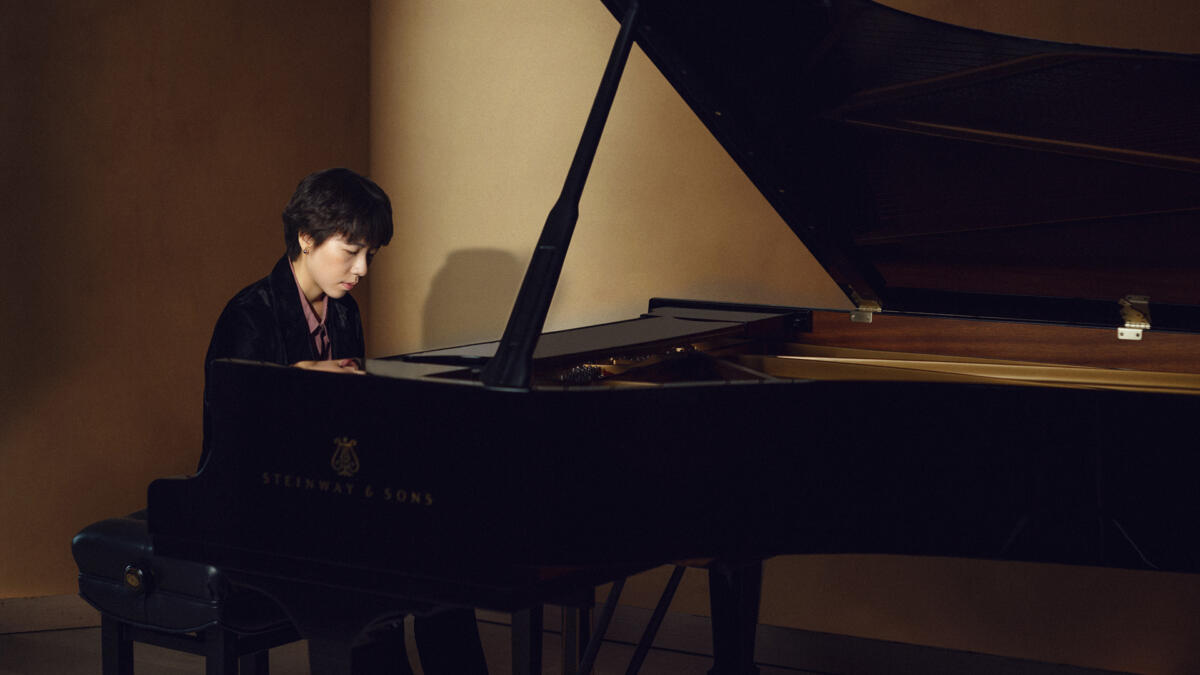
Discover The ‘Unconfined’ Hand The Practical Dilemma of Small-Handed Pianists and Potential Solutions
This project explores the relationship between piano technique and performance, emphasizing the mental and physical aspects of playing. While large hands are often seen as ideal, virtuosos like Myra Hess and Alicia de Larrocha, who had smaller hands, overcame these limitations. The study aims to uncover the potential of small-handed pianists and highlight the role of perception and physical movement in performance.
The research has two main goals: first, to examine the challenges small-handed pianists face and evaluate existing strategies; second, to investigate how perception influences performance. Key questions include whether small-handed pianists have unique advantages and how hand size affects performance nuances.
Methodologically, the study combines personal experience as a small-handed pianist, video analysis of renowned pianists, and interviews with teachers. Interviews with diverse teachers will provide insights into teaching small-handed pianists, while a reflective report and sightreading teaching experience will deepen understanding of perception.
The project also revisits the concept of “handing,” a term introduced by Artur Schnabel but often overlooked in modern pedagogy. This concept will be refined and expanded to enhance its relevance in piano performance research.
Current research focuses on analyzing performances by small-handed pianists and conducting interviews with teachers from varied backgrounds. These interviews explore definitions of small hands, teaching approaches, and strategies for addressing challenges. By integrating these perspectives, the study aims to provide practical insights and advance understanding of small-handed pianists’ unique needs.
Biography
Binyan Xu is a pianist and music scholar whose research integrates performance practice with studies of pianists’ physical capabilities and music perception. Drawing from her personal experience as a small-handed pianist, her doctoral research at the Royal Academy of Music explores the potential of small-handed pianists, while examining the concepts of handling, perception, and physical movement in piano performance.
Prior to her doctoral studies, Xu completed her Master of Music in piano performance at the Royal Academy of Music under Meiting Sun, and received her Bachelor of Music from Virginia Commonwealth University.
Julianna Siedler-Smuga
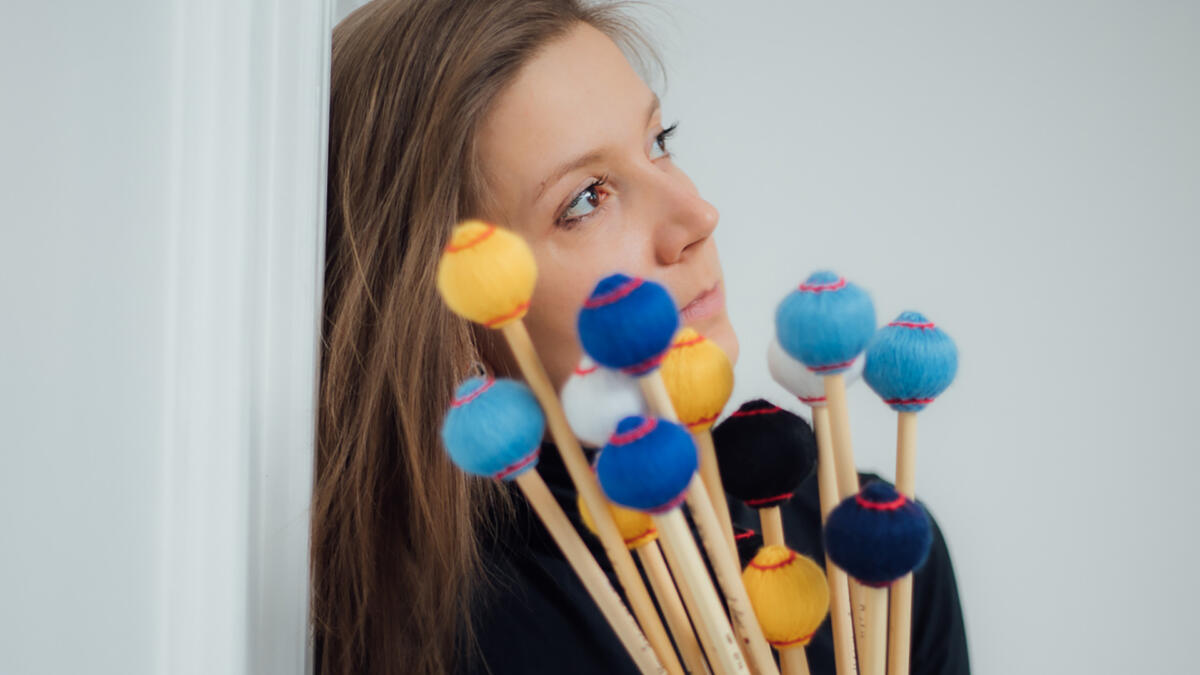
Percussion music socially involved
Percussion music already has many genres. Suppose one looks through the history of percussion music, one will realize that there was program music, stand-alone music, music inspired by mathematics (I. Xenakis), percussion theatre (J. Cage), body percussion (V.Globokar), etc. Nowadays, music has started to be socially involved. We can see multidisciplinary projects where music is just one of the elements, and the musician is a theatrical performer. Now, the time has come for classical/contemporary music, which is socially involved. It is not only the title that suggests opinions written by musical notes about the surrounding world. It also has a video, specific body moves, and lyrics. Of course, we could see that before in popular music. But classical music was always somehow on the side, trying to share ideas through sounds.
I would like to show the process of collaboration with the composer with research aspects and personal aspects with the example of the work by Marta Śniady – “To be nobody’s mom,” which I premiered in September 2024. This work is a part of the bigger project, “Gameta Show” on which we are working. The idea is to show women’s body aspects in different contexts, like maternity, in commercials, in relationships, how women can see it by themselves, etc. “To be nobody’s mom” focuses on the aspects of maternity.
M.Śniady – “To be nobody’s mom” for performer and electronics

Biography
Polish percussionist, marimbist, performer, improviser, music producer. Her main interests focus on contemporary, experimental music, percussion theatre and new music for marimba. Her main artistic goal is to promote and develop contemporary, socially involved, marimba music, mainly written by Polish composers. She commissioned and premiered many Polish works written for her by inter alia: M. Sniady, K. Krzewinski, N. Fukuoka, A. Zagajewski, P. Peszat, P.Malinowski.
Julianna performed at many international contemporary music and improvised music festivals inter alia: Warsaw Autumn Festival, Ad Libitum, Umami Berlin, Musica Privata, Nove Hudby Plus, Agora Percussio, Poznan Music Spring, Mozg Festival Bydgoszcz, Audio Art Festival, Krakow International Composers Festival, Theodor Milkov Summer Camp, Online Mallets Festival, Doctors in Performance. She obtained her Master degree in disciplines: classical percussion (with the highest distinction – Academy of Music in Lodz), marimba podium (Royal Conservatory in Antwerp), percussion theater (with distinction – LUCA School of Arts Leuven). In 2011 she get an Erasmus scholarship in Royal Conservatory in Brussels. During years Julianna attended many masterclasses led by interalia: K. Abe, J. Geoffroy, N. J. Živkovič, K. Myćka, M. Klimasara, E. Sejourne, Tchiki Duo, A. Caggiano, Seung Myeong Oh). In 2017 she obtained doctoral degree in Performing Arts (Percussion), her work was about contemporary/the newest Polish music for marimba. Julianna is creating also music for theater and choreographic performances as music producer. In 2014 – 2017 with Amber Tzu – Chun Chen Julianna was working in marimba duo – Equilibri Duo, and 2017 – 2023 with Anna Rutkowska as Dalbergia Duo.From 2015 Julianna is a member of International Marimba Association – Marimba Festiva, in which she is active as an organizer and lecturer of events. She is teaching in Warsaw/Poland district and also working as orchestral percussionist.
Juho Laitinen
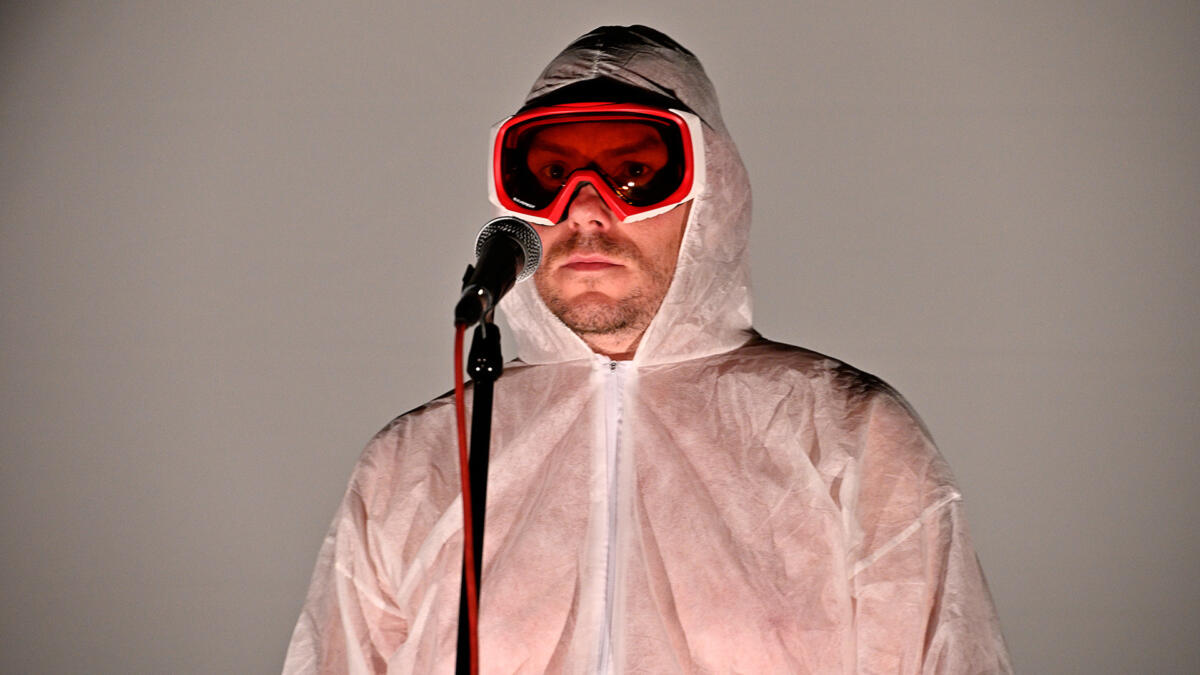
Inhabiting liminal spaces – experi(m)ent(i)al music-making
What lies between dualistic extremes? Is there continuity in our discreet actions? Where and when is our shared here-and-now?
Making experimental music means to engage with an ephemeral, subjective and immersive experiential present. This is a potent way to gather philosophical, conceptual, psychological and corporeal understanding about the world and our place in it. Using my recent compositions as starting point, I demonstrate an attempt to access this knowledge using a feedback process between gesture and perception.
In “How high the moon, how deep is your love” the highest possible low and the lowest possible high pitches are determined by way of vocal glissandi. Completing this exercise doesn’t seem to result in splitting the frequency spectrum into two opposing parts. Instead, an ambiguous and pliant liminal space between categories is established, a balancing force between extremes.
In “Squeeze Music” a length of aluminium foil is compressed into a ball in one continuous movement. I observe this action as a coexistence of stasis and change, inspired by the views of Parmenides and Heraclitus on the nature of being.
“Homage à Jacques Rancière” refers to the philosopher’s argument that art, along with politics, defines and re-negotiates the boundaries of what can be understood and accepted. I use a microphone to seek out and amplify sounds that exist unattended in the performing space, thus hoping to sculpt a more comprehensive image of our time and space together.
Biography
Juho Laitinen works as an instrumentalist, composer, pedagogue and scholar. After studying the cello and voice in Turku, London and New York, he received a doctoral degree from Sibelius Academy in 2013. Laitinen has performed internationally and composed acoustic and electronic music for concerts, films and installations. As director of Tulkinnanvaraista, a forum for new and experimental music, he conducts the resident ensemble UMUU and works as dramaturge in the forum’s music theatre productions. He has also initiated the founding of Naarmu Ensemble, a collective of enthusiasts of music and live art open to all.
Elena Mindru
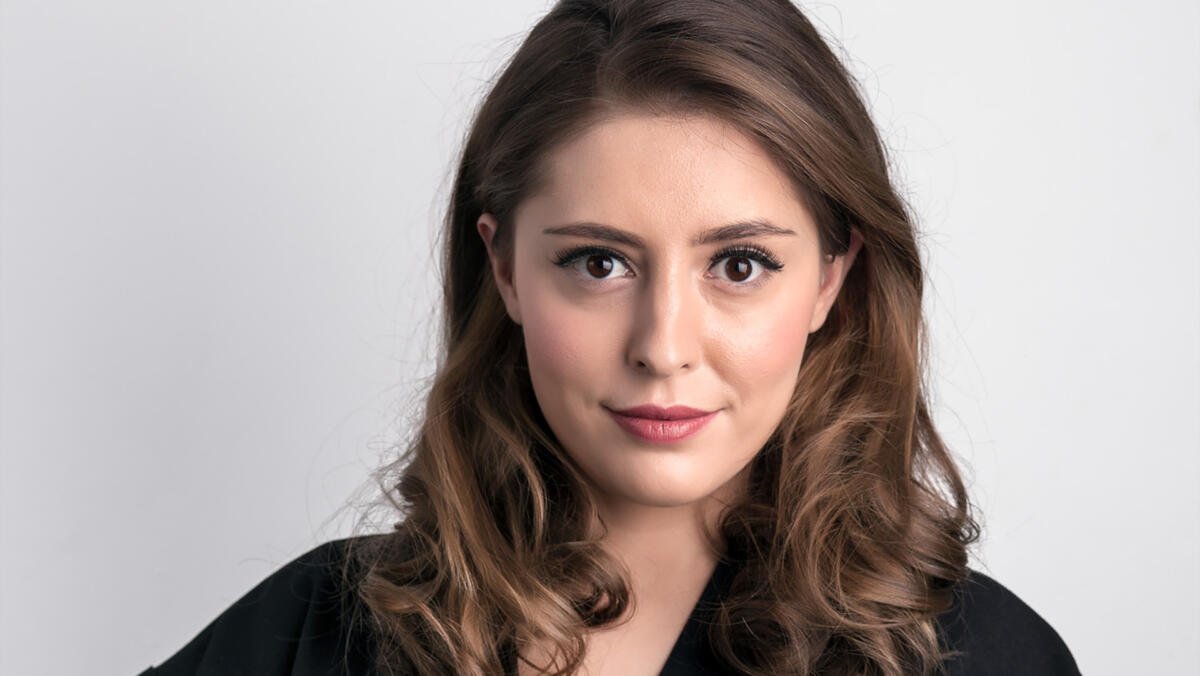
Exploring the second chorus in vocal jazz: a study of Sarah Vaughan’s melodic variation
This presentation will be based on my recently published peer-reviewed article with the same title: Mindru, Elena 2024. Exploring the second chorus in vocal jazz: a study of Sarah Vaughan’s melodic variation. Trio Journal 13 (2), 36-66. https://doi.org/10.37453/tj.147932
This paper explores the second exposition of the melody in vocal jazz performances that reuse the same lyrics, referred to here as the second chorus. This practice is crucial in vocal jazz, allowing singers to experiment with vocal delivery and showcase interpretative skills. The second chorus often incorporates variations or embellishments on the original melody, fostering continuity with the main theme while offering a personal touch to a standard tune. These modifications may include changes in pitch, rhythm, phrasing, and dynamics, along with ornamentation or improvised phrases. By altering note timing, adding grace notes, slides, trills, or experimenting with syllable articulation, vocalists reinterpret the lyrics from their own perspective while maintaining melodic recognizability.
A case study analysing the interpretative approaches of legendary singer Sarah Vaughan is included in this article. Selected recorded tracks from Vaughan’s album Live at Mister Kelly’s were transcribed and analysed, comparing them with the original published lead sheets. The musical analysis focuses on Vaughan’s interpretation of the melody and the variations she employs during the second chorus. Her mastery of this practice, through rhythmic and melodic variations, interplay with the band, and expressive use of lyrics, enhances the musical narrative and captivates the audience. The main research question is: What musical gestures and tools does Sarah Vaughan use in her recapitulation of the melody in the second chorus of jazz songs?
Biography
Elena Mîndru is a doctoral student at the Sibelius Academy, University of the Arts Helsinki, conducting artistic research in vocal jazz. She has presented research papers at conferences in Finland, Scotland, and France. A Montreux Jazz Voice Competition awardee, recognized by legendary producer and musician Quincy Jones, she has released six albums and performed in over 20 countries. Elena Mîndru writes most of her music, including for jazz quintets, big bands and symphony orchestras. She co-founded the International Jazz Voice Conference and is the executive director of Oulu Music Festival, bridging cultures and inspiring audiences worldwide.
Niklas Lukassen
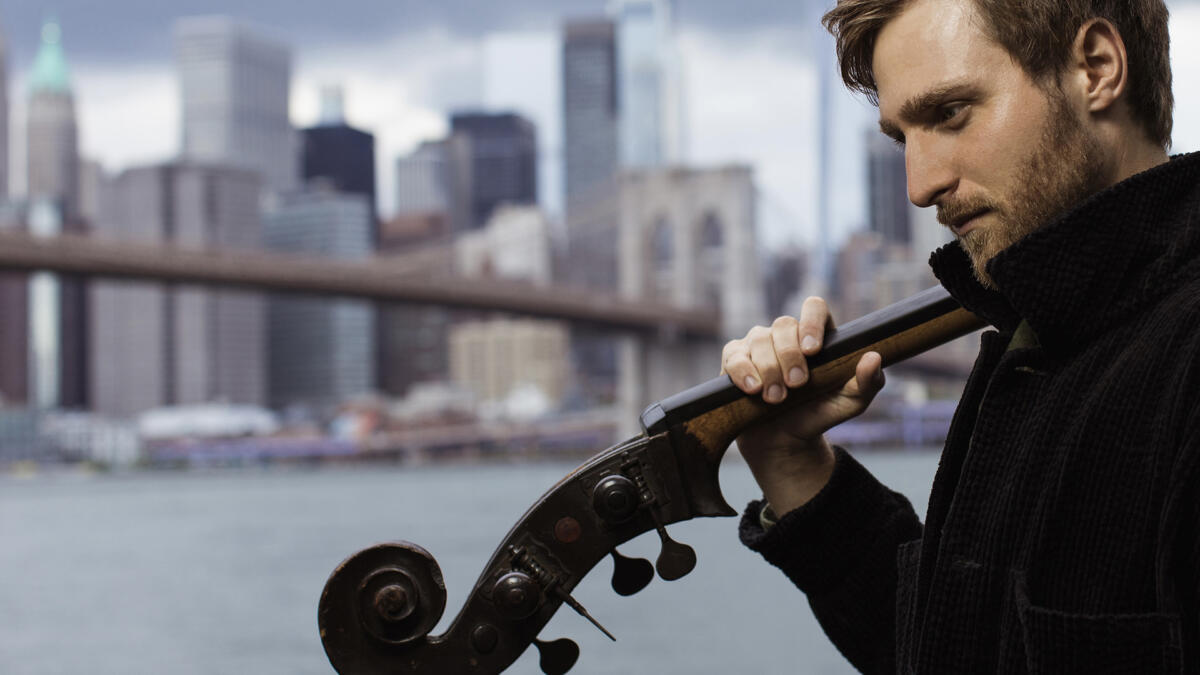
Exploring a novel hybrid instrument: The bass cello
This presentation exists as a subjective account of one improvising jazz musician, myself. I am a bassist, that equally doubles on both the upright bass and the bass guitar. For an improvising musician that identifies with two instruments as primary, it can be an immense challenge to develop one unified instrumental voice with a distinctively shared artistic DNA across several instruments. In my quest for authentic musical self realization, I put my inner hearing as an improvising individual at the center of my musical expression. While certainly taking factors into account that naturally lend an instrument to be played in a certain way, my research facilitates extended approaches by means of creative transfer of knowledge from one instrument to another and vice versa. By embracing similarities this way my research facilitates a form of innovation that doesn’t necessarily require re-invention from the ground up. Musical novelty is rather achieved through creating a new sound inspired by another, but explored in a new context on a related instrument. The consequently gained perspectives, possible sounds, and techniques blur the lines of previously perceived sonic and stylistic limitations. Through this process I aspire to, as much as possible, cultivate one distinctively recognisable authentic musical playing style across the string bass instruments that I play.
My research led to a collaboration with dutch bass luthier Mark Zandveld who build a novel hybrid instrument: The bass cello. Combining attributes of the cello, the upright bass and the bass guitar it is prone to adapting instrumental techniques from various angles.
While this work certainly focuses on my personal approach as an improvising bass player, it at it’s core encourages a creative approach, that can be adapted to other instruments.
Performance: “Tides” & improvisations by Niklas Lukassen (bass cello)
Biography
German jazz musician and composer Niklas Lukassen showcases an equally astonishing lyrical sensibility on both the upright bass and the bass guitar. A formative part of his career lies in New York where he was mentored under Ron Carter. He has been fortunate to accompany artists such as Kurt Rosenwinkel, Mike Stern, Jorge Rossy, Richie Beirach and Norma Winstone. His album “Still Waters Run Deep” reveals a multi-faceted sound world with Ben Van Gelder, Kit Downes and Francesco Ciniglio. Alongside pianist Gwilym Simcock and drummer James Maddren he currently explores untrodden musical paths on a novel hybrid instrument: the bass cello.
Vera Plosila and Anastasios Zafeiropoulos
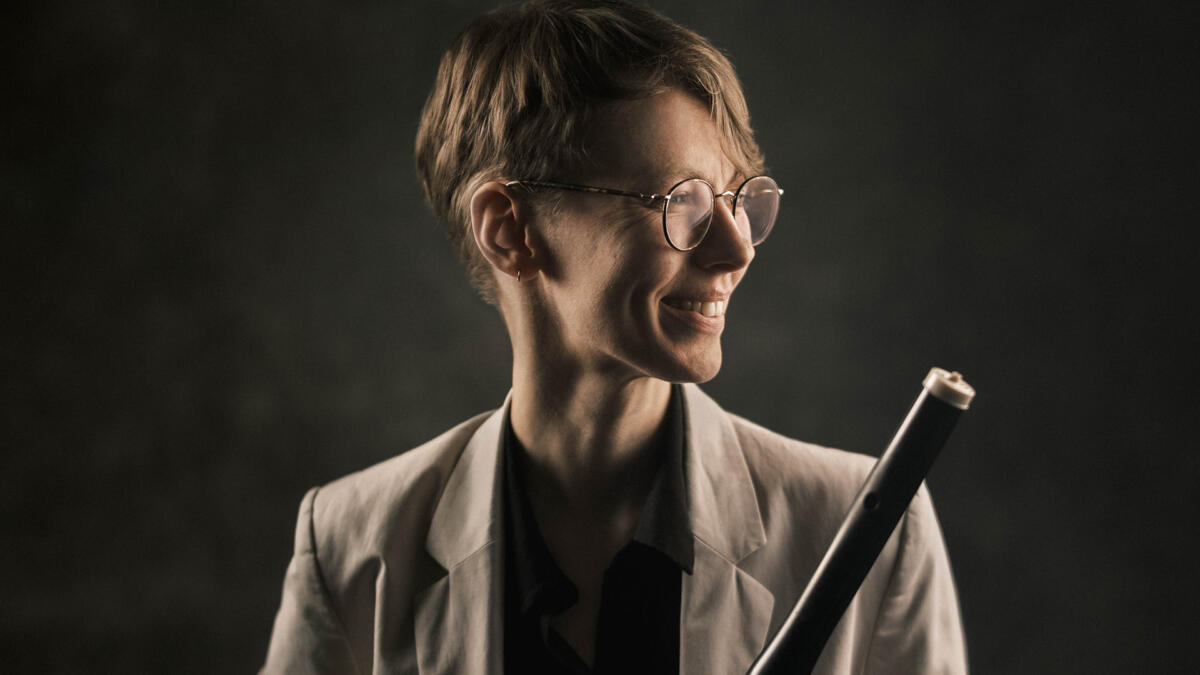
The Accompanied Keyboard Sonata on the Early Fortepiano and Traverso – Aesthetic and Practical Considerations from the Perspective of Performing Musicians
Adaptive performance practice refers to a historical approach to music-making in which notated repertoire is altered in terms of instrumentation or other elements to meet the requirements of the performers and the moment (Laurie Stras, 2018). This flexibility is evident in Nicholas Baragwanath’s analyses of Mozart’s accompanied keyboard sonatas, where the keyboard texture is both commented and expanded by improvised instrumental and vocal lines (2012). The codification of musical patterns (schemata) enabled spontaneous contrapuntal solutions in real-time, but this prevalent 18th-century performance style has largely been lost to us today. However, the research of Baragwanath (2020) and Robert O. Gjerdingen (2007) provides modern musicians with insights into the subtle nuances of the Italianate galant style, a highly codified musical discourse central to late-18th-century performance and reception in central Europe. These findings are complemented by the studies of Emily Dolan (2013) and Deirdre Loughridge (2018), which illuminate the historical significance of timbre in the evolution of 18th-century chamber and orchestral idioms.
In 2024, I collaborated with fortepianist Anastasios Zafeiropoulos to rehearse, perform, and record accompanied keyboard sonatas by Johann Schobert (Eb Major Op. 7 No. 1), Johann Christian Bach (A major Op. 17 No. 4), and Muzio Clementi (F major Op. 2 No. 5), using replicas of 18th-century fortepianos and traversos. This study aimed to develop theoretical and rehearsal methods that facilitate the performance of accompanied keyboard sonatas. By employing historical fortepianos, I also investigated how tonal quality contributes to the construction of musical meaning when a keyboard sonata is accompanied on the traverso. The research methods integrated schematic analysis, organology, and a hands-on chamber music approach to access and document the rich musical knowledge embedded in adaptive and improvisatory practices. The recital showcases the outcomes of our work over the past year.
Keywords: adaptive performance, accompanied keyboard sonata, galant style, traverso, fortepiano
Biographies
Vera Plosila is a PhD candidate in Artistic Research on the docARTES programme at Leiden University. Supervised by Professors Rebecca Cypess and Dinko Fabris, her research examines adaptive performance practices in German chamber music from the 1760s to the early 1800s. In spring 2025, she was a Visiting Research Fellow at the Royal Northern College of Music. Vera has published in the International Review of the Aesthetics and Sociology of Music, and her article on accompanied keyboard sonatas will be published in 2026. She is a member of the Early Muse network and takes part in the European Early Music Union’s REMArkable mentorship programme for researchers.
Vera has performed as an orchestral and chamber musician with ensembles in the Nordic-Baltic region, the Netherlands, Belgium, Germany, Spain, and Italy. Recently she has performed with the Finnish Baroque Orchestra and the Brussels-based chamber ensemble WIG Society, and in October she will give a solo recital at the Venetian Registri Festival. She is part of the artistic leadership team for Ensemble Nylandia’s forthcoming production La Doricela: Inter-Acts, in collaboration with the Canadian opera studio re:Naissance. She leads the traverso consort Intra Vires and is currently extending her knowledge of Renaissance music through advanced studies at the Schola Cantorum Basiliensis.
Anna-Kaisa Meklin
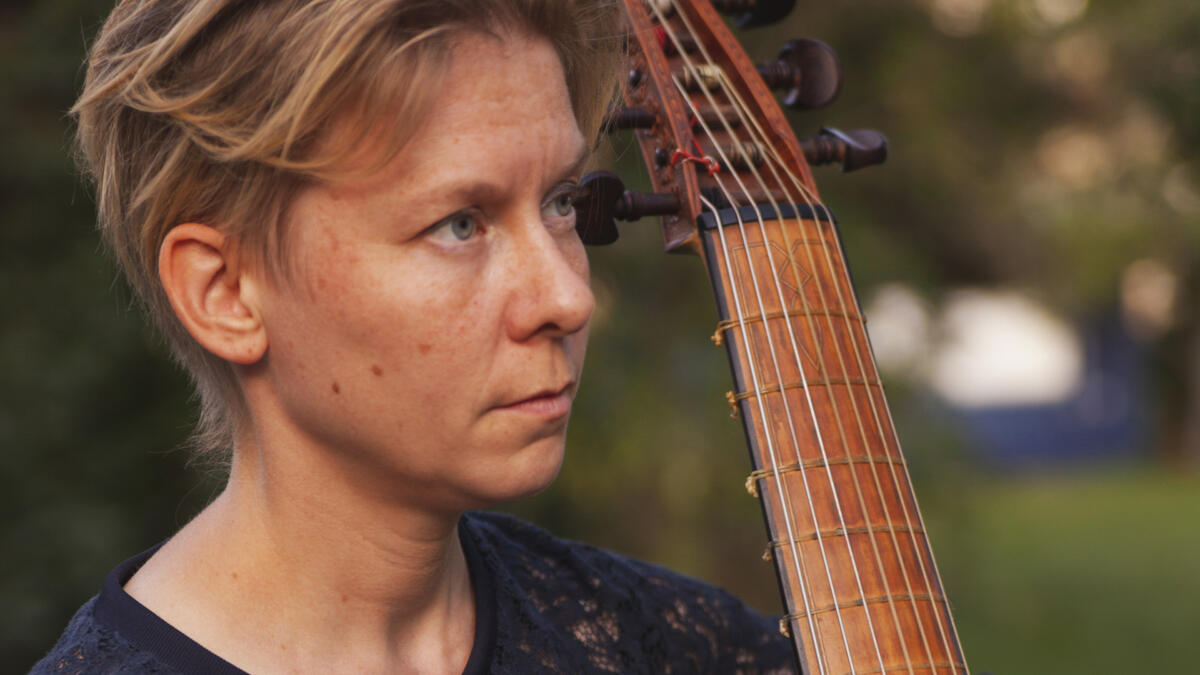
„Grounding“ – Using historical performance practice to find new ways of composing and improvising for viola da gamba
I would like to present and perform my latest solo composition for viola da gamba, „Grounding“, which will be released in 2025 on the label ligne de crete. My interest is to describe my way of composing and improvising for viola da gamba. taking into account my musical profile as a composer and improviser of contemporary music, as well as a specialist in early music. My focus is on a decompositional process using both historical and contemporary sources as a starting point. In my composition „Grounding“ I use a treatise from Christopher Simpson, „an introduction to the playing upon a ground“ (1659), the well-known melody „flow my tears“ by John Dowland (around 1600) and a text by Pauline Oliveros „The Earthworm also sings“ (1992).
For me as a composer and improviser it is important to make the (continuing) history of my instrument audible in a broad sense. This means that I use various sound-related materials from the sources, such as melody fragments, grounds, ornaments, improvisation techniques etc., and mix them with musical ideas of today, including environmental sounds and noises. By doing this in a historically continuos but innovative way, my aim is to create new vocabulary for the viola da gamba. I myself call this method „grounding“, referring to the method of improvising „upon a ground“, on the same repeated bass line, over and over again.
With the text by Pauline Oliveros I am including experimental deep listening practises in my compositional process. I am asking questions like „Where does memory end and imagination begin?” or „What and how were composers like John Dowland possibly hearing, and listening?
Biography
Anna-Kaisa Meklin *1979 in Finland, lives and works since 2003 in Switzerland. She is a versatile musician, performer/composer with her instruments viola da gamba and organ. Her projects often locate in interspaces between different musical languages, like early music and contemporary music. Active as a composer and interpret in the experimental and contemporary music scene in Switzerland and abroad, member of the collective Insub in Geneva. Compositions commissions for Cyril Bondi and Christian Alvéar (2022) and the Mondrian Ensemble (2024). She holds a master’s degree for early music performance from the Schola Cantorum Basiliensis (Basel), and is a certified Deep Listening facilitator.
Lora Kmieliauskaitė
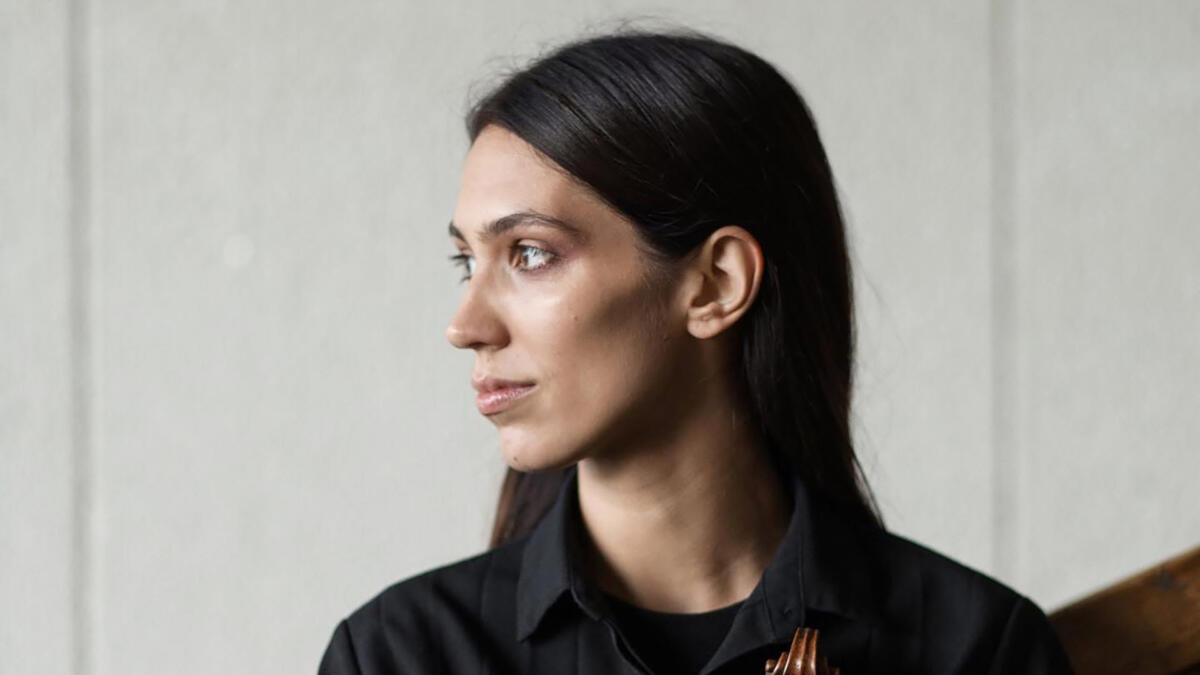
The Group Genius Seeks an Individual Body
How does the process of artistic collaboration shape a performer’s artistic identity and practice? This question is central to understanding the co-laboratory as a method of collective creation—where collaboration itself becomes the driver of performativity, shaping not only musical works but also artistic methodologies.
In my research, I explore how music—particularly when it extends into performative and theatrical dimensions—demands a reconfiguration of the musician’s relationship with both their instrument and their own body. This shift emerges through a co-laboratory approach, where performers and creators engage in workshop-based collaboration, allowing performativity to be shaped in real time through collective artistic processes.
Building on Falk Hübner’s concept of extension, I examine how performers expand their artistic agency beyond traditional instrumental practice. Extension in this context refers to broadening the performer’s role into theatrical, interdisciplinary, and embodied performance modes. Through case studies from my own artistic practice, I explore how these extensions redefine the musician’s professional identity within contemporary music.
Biography
Lora Kmieliauskaitė is a Lithuanian violinist and active participant in music, theatre, and film production. As a performer and co-founder of the contemporary music ensemble Twenty Fingers Duo, she has presented her work at numerous prestigious festivals, including the Huddersfield Contemporary Music Festival (UK) and Loud Weekend (USA), among others. Lora was awarded the BAFF scholarship, which facilitated her professional engagement with the Bang on a Can contemporary music organization in New York in 2024. In 2024, she received the Young Artist Award from the Lithuanian Ministry of Culture. She is currently pursuing a doctoral degree at the Lithuanian Academy of Music and Theatre.
Ivan Moshchuk
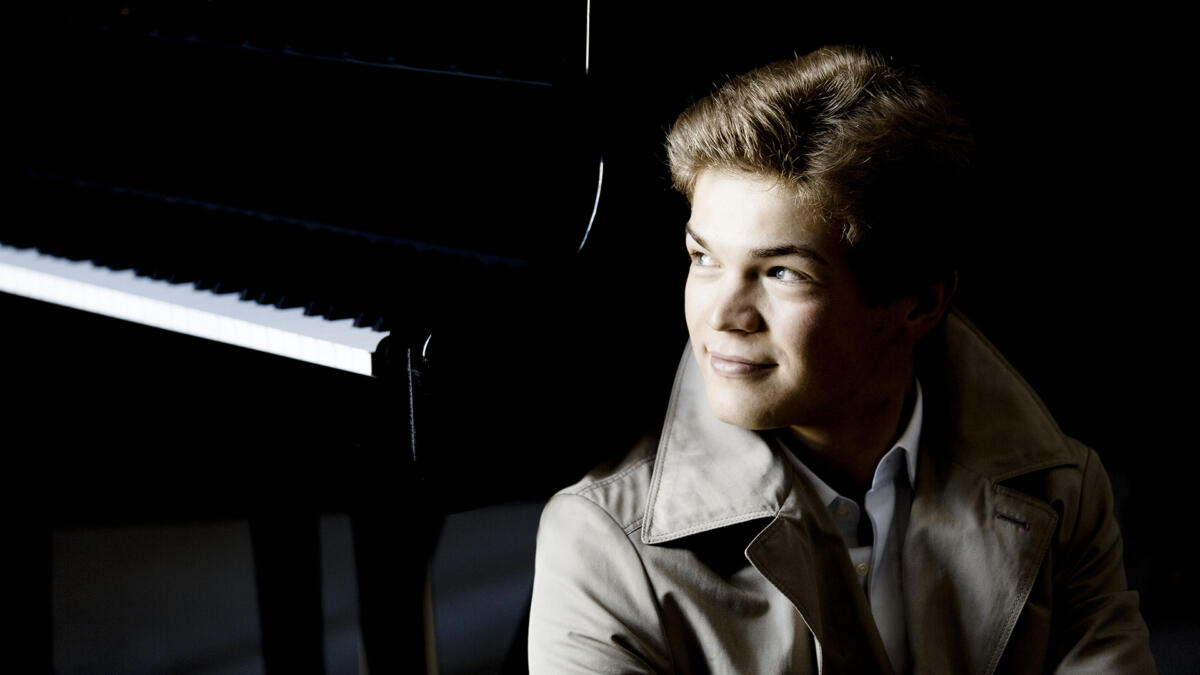
The Edge of Musical Image
This paper presents a practice-led study centered on the problems of visual translation of musical performance. I will discuss two experimental concert films in which I have functioned as both performer and filmmaker, entitled Vision Fugitive and Winter Afternoon. Both films were completed with a single camera and no reliance on traditional montage techniques, and are anchored by contrasting programs – the first features music of Prokofiev, Rachmaninoff, and Cage; the second, music of Schubert. By juxtaposing these two works, I will examine an elusive aspect of the image-sound paradigm – how the edge of music relates to the edge of image. Today, western classical music is continuing to evolve amidst a technological revolution where image is constantly accelerated. In this flood of images, it has become impossible to notice fine details of frames, or the “edge” of an image. This bombardment of images also carries implications for the way we hear music. However, what happens when we decelerate the image to the extreme and create long-form concert films where the camera is either carefully choreographed as a single flowing image, or deployed for the creation of a series of still frames of significant duration? In my research, I have attempted both methodologies and will demonstrate that extending the image to such extremes not only gives us a chance to process an image rigorously, but also impacts our conception of the boundaries and structure of a musical program. This paper will demonstrate the implications and problematic aspects these approaches pose for the further deployment of montage in filming classical music, and ultimately argue that such experimental methods bring the viewer closer to the ritual aspects of a live performance experience.
Biography
Pianist Ivan Moshchuk is emerging as a distinct voice in the sphere of classical music – his performances have taken him to major cities across Europe, North and South America, and Asia, appearing on stages such as the Kleine Zaal of the Concertgebouw in Amsterdam, Suntory Blue Rose Hall in Tokyo, and the Accademia Filarmonica Romana in Rome. Ivan completed advanced training in 2013 at the Peabody Conservatory of Johns Hopkins University, graduating in the class of Leon Fleisher. Currently, he is a PhD candidate at the Royal Academy of Music in London, where his research is centered on the relationship of music and moving image.
Gustavo Afonso
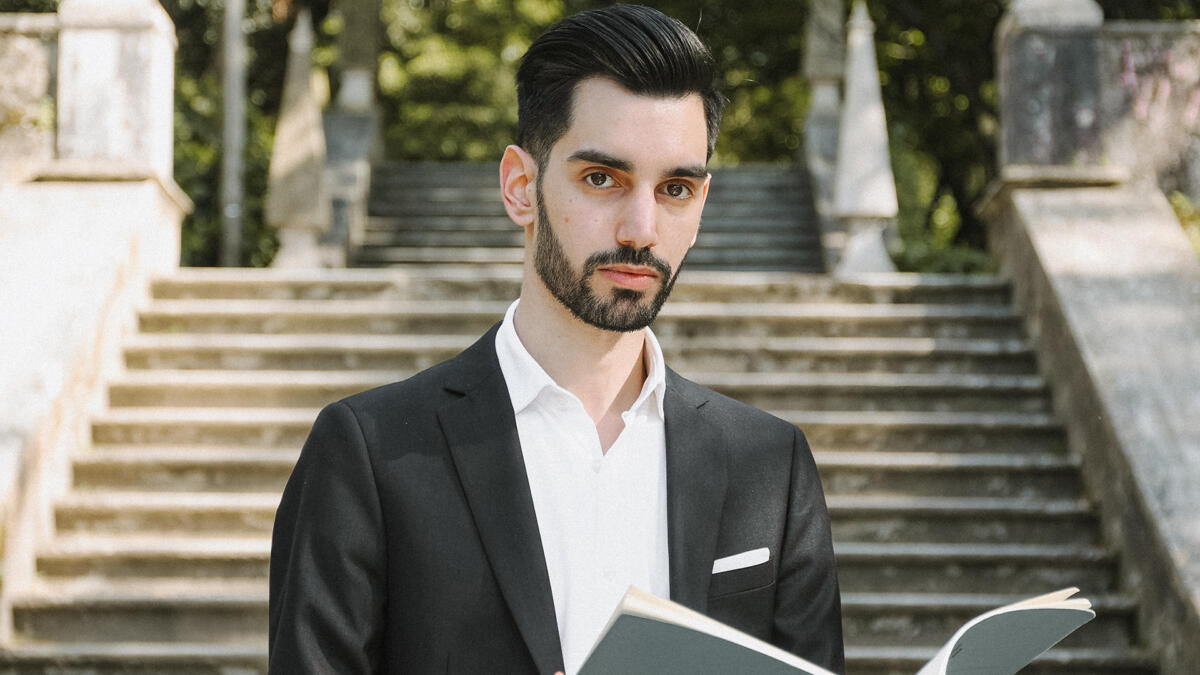
(De)constructing the Ancient: collaborative experimentation and gender dynamics in the recreation of Medea
Medea, the protagonist of Euripides’s tragedy, has inspired numerous artistic productions throughout the history, remaining a central topic in studies on the role of women in Ancient Greek society (Rabinowitz 1993; Griffiths 2006; Mitchell-Boyask 2008; Othman, Ahmad, and Manan 2011), with repercussions on current debates.
This research proposal focuses on the collaborative process of recreating Medea in partnership with the University of Coimbra Students Theater, the collective that premiered the play in Portuguese in 1955, with music by Victor Macedo Pinto. The research questions were: 1) how to integrate archival materials into a contemporary recreation within the scope of artistic research, and what ethical and methodological implications does this process raise? 2) what is the role of music in the tragedy, and how can it be articulated with the scenic component of the play? 3) how can the musical and theatrical elements of the recreation reflect contemporary challenges regarding gender issues? These questions led to the following objectives: 1) to explore the relevance of the principles of postdramatic theater (Lehmann 2006), composed theater (Rebstock and Roesner 2012), and experimentation (Assis 2018) in a project with a historical background; 2) to understand, through music experimentation and scenic exploration, Medea’s role in light of gender perspectives, fostering discussion on the current social impact of this topic.
Methods included archival research, interviews, and performance laboratories that focused on scenic and musical experimentation, exploring techniques of movement and body expression. The performance laboratory practices followed the immersion – dispersion – consolidation model proposed by Marinho et al. (2020), generating a wealth of materials that were analyzed, selected, and creatively combined during rehearsals. This process ultimately led to a final performative alignment for the public presentations, which will be illustrated using video recordings. The collaborative working models involved the stage director, actors, and musicians throughout the process.
Biography
Gustavo Afonso is a Portuguese pianist and researcher. He studied piano with Álvaro Teixeira Lopes, Diāna Zandberga, Rita Dourado and Helena Paula Figueiredo, and has been awarded prizes in national and international piano competitions. Gustavo has performed extensively in Portugal, including as a soloist with orchestra. He graduated from the University of Aveiro (UA) and was awarded the UA/Caixa Geral de Depósitos Prize. Gustavo is currently attending the Doctoral Program in Music Performance at UA, with a research project focused on Victor Macedo Pinto’s repertoire. He is a member of the research center INET-md, with a fellowship granted by INET-md/FCT (DOI: 10.54499/UI/BD/151371/2021).